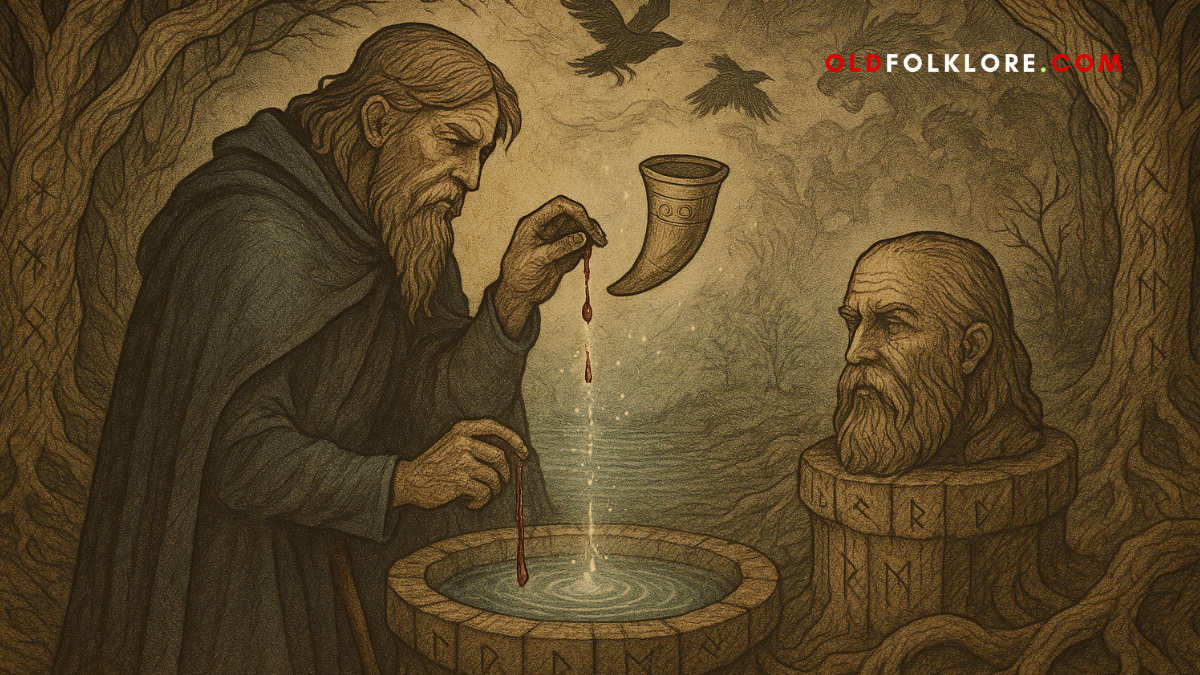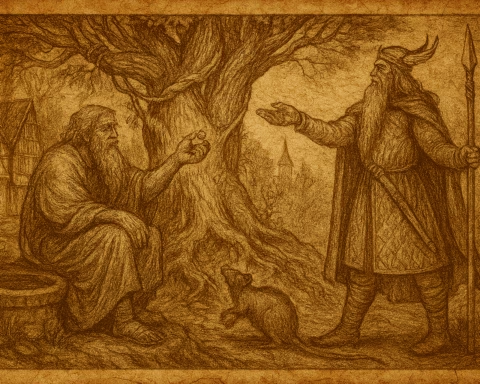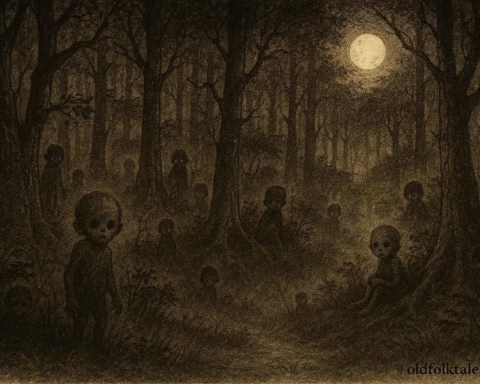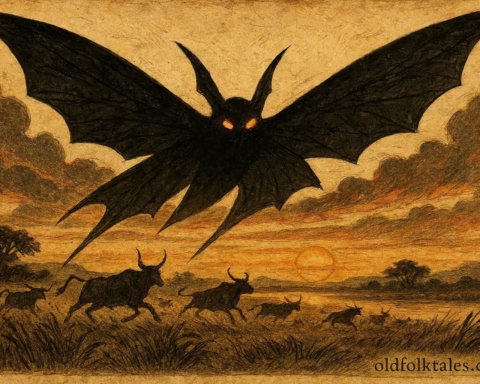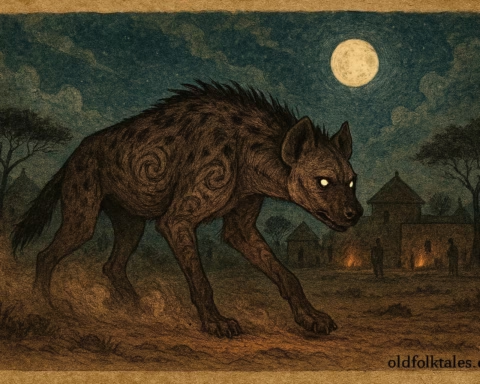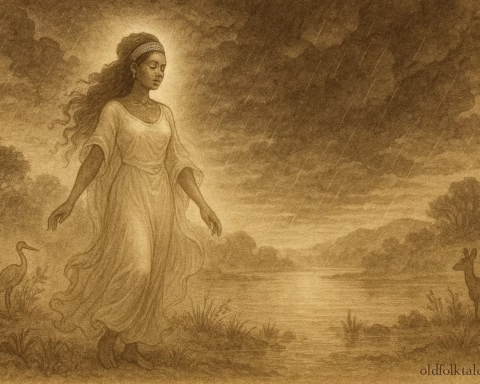In the cold windswept halls of Asgard, Odin sat alone in his high seat, Hlidskjalf, from which he could see all the realms. His wolves lay still at his feet. His two ravens, Huginn and Muninn, circled above but carried little news that satisfied him.
Odin was not content with being king of the gods. Ruler of war. Father of warriors. He longed for what few dared to seek, truth beyond the reach of gods and mortals. The type of knowledge etched into the bones of the universe, written in the stars and shadows, whispered in roots and runes.
And so, one morning, before the sun had burned the frost off the meadows of Vanaheim, Odin set off alone.
He carried no weapons. Only his staff. He walked past the gates of Asgard, down the rainbow bridge, and through the lands of Midgard. Mortals bowed in fear or awe. He did not stop.
His destination was the edge of time, where the World Tree Yggdrasil bent toward the Well of Mimir, deep in the roots, far below even Helheim. It was said that whoever drank from the well would gain cosmic wisdom. But it was not given freely.
Odin At the Well of Mimir
Mimir, the ancient guardian of the well, sat as still as the stones. His head, severed long ago in a war between gods, had been kept alive through magic and wisdom alone. Odin approached and bowed, not as a king, but as a seeker.
“I have come for a drink of your water,” Odin said.
Mimir’s voice was like rustling leaves and cracking ice. “And what will you give in return, Allfather?”
Without hesitation, Odin reached to his own face and plucked out his right eye. Not with pain, but with resolve.
He placed the bleeding eye in the waters of the well. The liquid hissed, shimmered, and accepted the price.
Mimir gave Odin a single horn filled with water. Odin drank deeply.
The world opened like a scroll. He saw Ragnarök, the doom of the gods. He saw betrayals, the death of his son Baldur, and the fire that would consume the world. He saw hope too, though small: a green shoot rising from ash.
Odin blinked. Now, with one eye, he saw more than he ever had with two.
Odin’s Return to Asgard
Odin returned, changed. He wore a hood low over his empty socket. The warriors of Valhalla cheered, but he raised no cup. His heart was heavy with the truths he had seen.
He shared some knowledge with the other gods, but not all. Some secrets were too sharp to speak. He carved runes into stone, taught magic to humans, and whispered songs of fate into the ears of the Norns.
But most of all, he watched. Quiet. Knowing that wisdom is a burden, not a prize.
And from that day on, the god who gave up his eye became the watcher of all things. Not just of battles and blood, but of truth, sacrifice, and destiny.
Knowledge Check
1. Why did Odin sacrifice his eye?
Odin gave up his eye to drink from Mimir’s Well and gain true wisdom, knowledge of the past, present, and future.
2. What is Mimir’s Well?
Mimir’s Well is a sacred spring at the base of Yggdrasil, guarded by the wise being Mimir. It holds the deepest secrets of the cosmos.
3. What did Odin see after drinking from the well?
He saw Ragnarök, the end of the gods, the death of his son Baldur, and glimpses of hope in the world’s rebirth after destruction.
4. Why is Odin called the Allfather?
Odin is called the Allfather because he is the father of many gods and mortals, and the ruler of Asgard and the Aesir gods.
5. What do Huginn and Muninn represent
Odin’s ravens, Huginn and Muninn, represent “Thought” and “Memory.” They fly across the realms and report back to him.
6. What is the moral lesson of this story?
True wisdom often comes at great personal cost. Leadership requires sacrifice, and seeing the truth sometimes means bearing painful knowledge.
Origin & Source:
- Country of Origin: Norway, Iceland, Denmark, Sweden
- Primary Source: Prose Edda by Snorri Sturluson (13th century)
